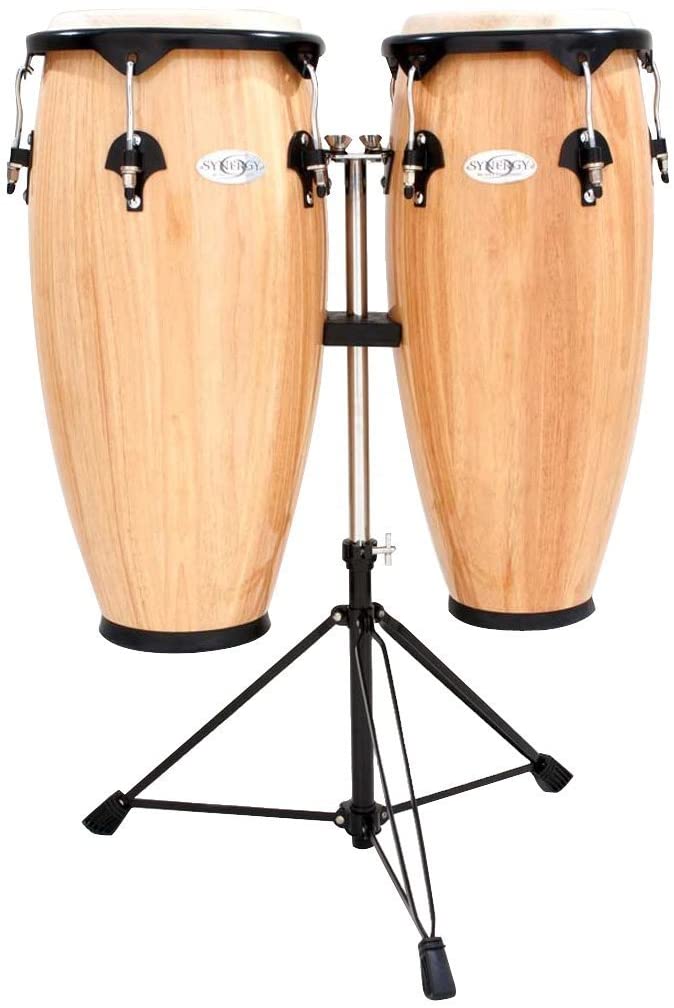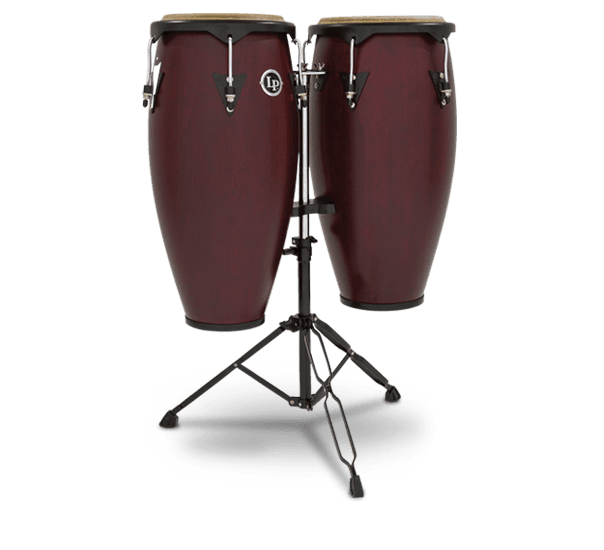Conga is a drum with one head and has a narrow body. Conga players use fingers and palms of both hands in playing conga.
Congas are of different sizes, with the largest being about 15 inches while the smallest is 7 inches and can be hung on the shoulder by a strap. The size of a drum affects the quality, pitch, and volume of sound produced, and thus large congas are for lower rhythmic songs.
We recommend amateurs use the smaller ones => Best Congas Review [currentyear]
For a perfect salsa, congas must be present to give your audience the rhythmic sounds—this type of drum beats mostly found in Cuba and Africa. The experienced traditional conga players are known as the Conguerwhile those dancing the Conguero’s music are the Rumberos. The best Afro-Cuban rhythms owe a lot to the congas drum set. Congas are now played all over the world. The instrument was in early years known to be Cuban, but with the fusion of Jazz and Cuban music, it is now a worldwide instrument.
Components of the congas
Various parts make up the congas. You need to know the parts well to ensure that you get the best out of the congas. The congas consist of three significant parts discussed below;
1. The shell
The shell wood or glass. The one made up of wood produces warm and deep sound while the one made of fiberglass produces loud and crisp sound. Changes in weather conditions significantly affect the shape of the wood-made shell, thus requiring tuning most of the time. There are only two types of wood used to make the shell; Siam Oak and American Ash.
2. The Hardware
The hardware constitutes two main parts:
- The rim used to hold the head to the shell
- The tuning lugs which mainly tunes the conga head
However, this part is slowly losing its function in the everyday use of three-ply stave and fiberglass-reinforced shells.
3. The Head
The conga head is made up of two types of materials, namely:
- Rawhide– produces a warm and deep sound, but its main disadvantage is that it is weather sensitive.
- Synthetic– it produces a bright and crisp sound. It is not affected by the weather.
Most congas use the rawhide; hence you should disregard the synthetic one.
How to tune your congas
Congas are not just struck, and they produce quality sound, they need to be appropriately tuned. Here is a proper way to tune your conga.
You can either use cross pattern tuning, which is used in the typical drums or just tune each lug at a time. When tuning each lug at a time, you give each nut the same number of turns, which ensures that the head remains flat. The conga is tuned to suit the song to be played; thus, it is essential to do it.

Maintaining your congas
Every instrument requires excellent care so that it remains in good functional condition and also durable. Two parts of a conga require a lot of maintenance. These parts are:
- the head requires application of almond oil to make it smooth
- the tuning lugs that require lubrication for ease in tuning. The use of synthetic oil does this lubrication van.
Quinto drum
What determines the name of this type of musical instrument is its size. Thus Quinto is 11 inches while congas are 11.75 inches. Therefore, the Quinto drum is smaller than the conga drum.it is the smallest of all the drums in this series. Quinto drums produce high pitch sounds. Due to its high pitched sound, Quinto is used in most Cuban rumba styles.



